PDFelement-Powerful and Simple PDF Editor with OCR
The easiest way to convert images to text and editable Word.
The battle between PDF vs. JPEG formats often arises when it comes to digital images. Both formats have their strengths and weaknesses, and understanding the differences can help you make the right choice for your specific needs.
This article explores the key characteristics of PDF and JPEG formats, highlighting their advantages and considerations. With these, we hope to help you make informed decisions about which format to use.
In this article
Part 1. What Is PDF and When to Use It?
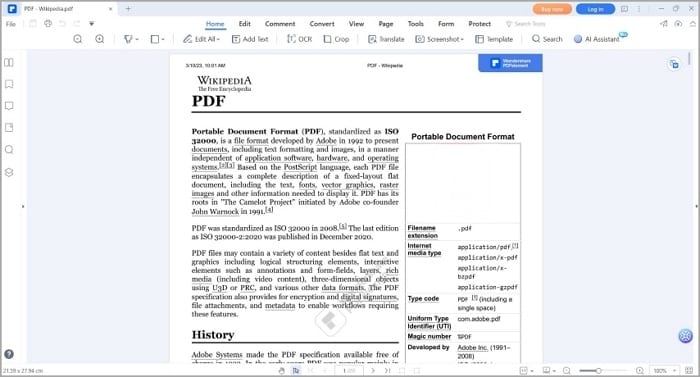
PDF - Portable Document Format - is a file format developed by Adobe Systems. The format is widely used for creating, sharing, and preserving electronic documents in a platform-independent manner. PDF files maintain the documents' original formatting, layout, and structure. This ensures consistency across different devices and operating systems.
Using the PDF format for sharing and preservation can be advantageous. First of all, it is a "universal format." You can access them from any device or platform. The layout will not change.
Furthermore, PDFs can contain interactive elements like text and hyperlinks. It allows you to include more information for the recipient to know. On top of that, PDF offers security features. Therefore, you can ensure the information you put in the file is protected.
Part 2. What Is JPEG and When to Use It?
JPEG, short for Joint Photographic Experts Group, is a widely used image file format. It is known for its efficient compression and suitability for photographic images and web graphics. In fact, this format is so popular that it has become synonymous with digital images. People love its efficient compression and widespread usage.
Using JPEG for graphics and photographic images has many benefits. This includes:
- Compression - JPEG is a lossy format. It allows you to reduce the file's size. Admittedly, it results in a slight loss in image quality. But it's not very noticeable.
- Color representation - One thing that's so good about JPEG is color representation. It supports the full range of colors and shades. Therefore, it is suitable for displaying vibrant and realistic photographic images. JPEG employs a color space that can accurately represent millions of colors, ensuring visually pleasing images.
- Compatibility -Nearly all web browsers, image editing software, and digital devices support JPEG.
The TLDR is that JPEG is a good format for storing images because of its efficient compression, wide compatibility, and accurate color representation.
Part 3. PDF VS JPEG: Head-On Comparison
How different is PDF from JPEG? Or how similar are they? Are there fields where they cross their use cases? Let's compare the two to find out.
Both formats are good for file sharing. However, they are for different types of content. PDF is for documents and multi-page files that may also include text and other interactive elements like form fields. Meanwhile, JPEG is for images.
1. Compression and Image Quality
With regards to compression, PDF is better. It can compress the file without losing image quality. On the other hand, JPEG sacrifices image quality when compressing files.
2. Compatibility
PDFs appear the same, no matter the device or program used to open them. However, one needs a PDF reader or editor to view these files. Contrarily, JPEG images are widely supported by web browsers, image editing software, and digital devices. You don't have to install a new tool to view them because your device already has one, for sure.
3. Functionality
JPEG presents only an image, while PDF can have text, images, form fields, hyperlinks, bookmarks, and other elements.
4. PDF or JPEG: Differences Regarding Printing
PDFs are designed for consistency. They preserve the original layout and formatting. Everything also retains its sharpness and clarity. As such, PDF is great for professional printing.
It is also worth noting that PDFs support vector graphics, which are resolution-independent. You can scale these without losing quality.
PDF also allows you to set the orientation, page size, color profiles, etc.
JPEG's characteristic as a lossy format makes it not ideal for printing. It may reduce the image quality when compressing, which can hugely affect printing.
Please also remember that JPEG has a fixed resolution based on the number of pixels. So pick the appropriate resolution for your desired print size. Likewise, convert the JPEG to the appropriate color profile. This allows you to leverage JPEG's RGB color model support and ensure accurate color reproduction.
As you can see, there are so many caveats to printing JPEGs. Thus, PDF is the preferred format.
5. PDF VS. JPEG: Differences Regarding Document Scanning
Most people scan documents as PDFs for many reasons. PDF can combine multiple scanned pages into a single PDF file, maintaining the original order and layout. So the format is perfect for contracts, office documents, or books.
Furthermore, fantastic PDF editors also offer OCR. This allows you to convert image text into searchable or editable text.
On the other hand, JPEG is not an ideal format for scanning. You may lose some fine details, and it supports only single-page documents. Thus, we don't recommend scanning documents as JPEGs.
To sum up, if you're deciding between PDF and JPEG, consider your purpose: use PDF for printing, archiving, and documents; choose JPEG for web graphics and photos.
Part 4. How To Convert JPEG to PDF and Vice Versa
Did you save your document in the wrong format? Don't panic. That is not a big problem. You can use file converters to convert them to the correct file format. Regarding what tool to use, we recommend Wondershare PDFelement.
Wondershare PDFelement gives you a solid PDF solution. It offers PDF editing, converting, compressing, summarizing, and a lot more! You can use this software to convert files to PDFs or PDFs to another format. The best thing is that the process is not complicated. In fact, it is very straightforward.
JPEG to PDF
Follow these steps to convert your JPEG files to PDFs:
- Download, install, and open Wondershare PDFelement.
- Click Create File > From File.
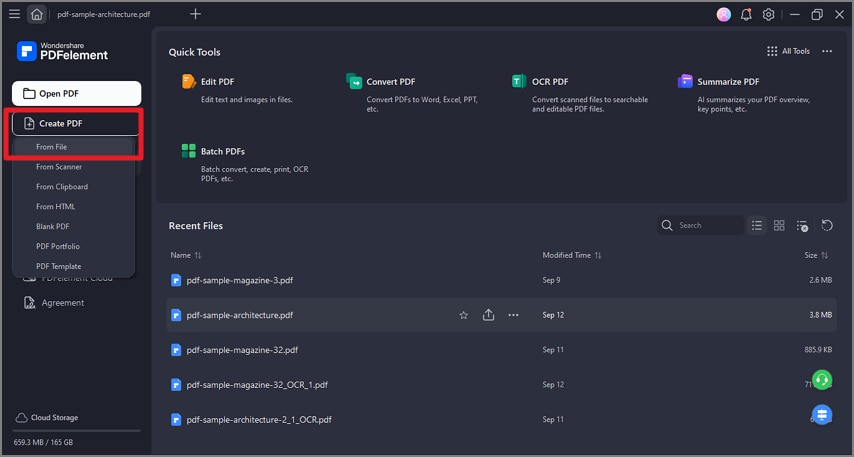
- Open the JPEG image that you want to convert to PDF.
- Click the Save button on the top right of the PDFelement window or press CTRL + S.
- Name the file, select a destination folder, and save it.
PDF to JPEG (One at a Time)
Here's how to convert a single JPEG into PDF using Wondershare PDFelement:
- Launch Wondershare PDFelement.
- Select Convert on the main menu.
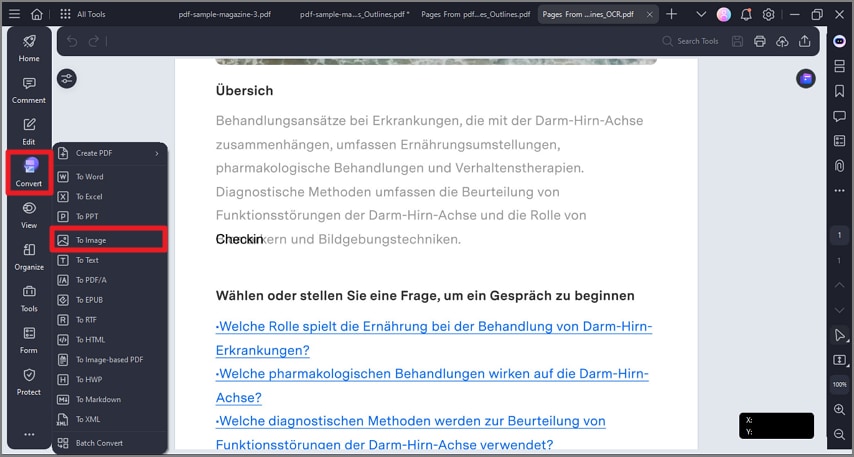
- A new window will pop up. Select the PDF that you want to convert to JPEG.
- Set the "Output Format" to JPEG.
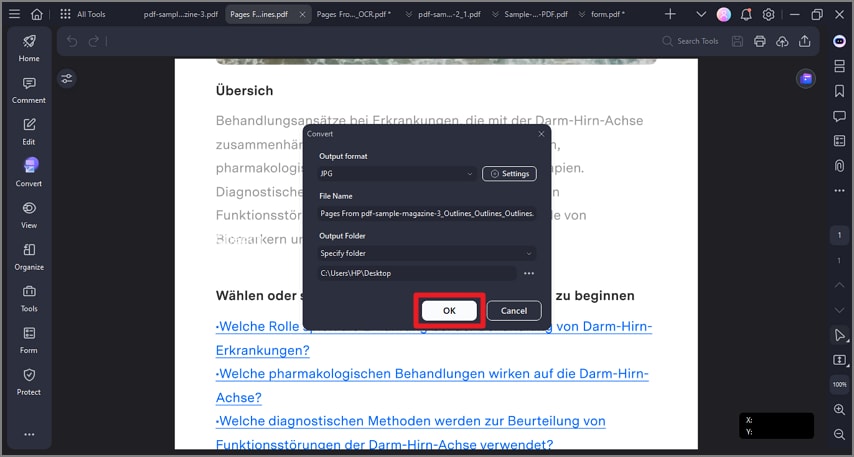
- Optionally, give the new JPEG a name. Then, select a destination folder.
- Click OK to start the conversion.
PDF to JPEG (By Batches)
Another feature that makes Wondershare PDFelement an amazing converter is its batch processing support. With this feature, you can convert multiple files at once.
Here is a guide for this feature:
- Open Wondershare PDFelement.
- Select Batch PDFs on the main menu.

- On the new window, select Convert.
- Click Add File to import the PDF documents that you want to convert to JPEG images.
- On the right panel, click the Dropdown menu for "Output Format."
- Select JPEG.
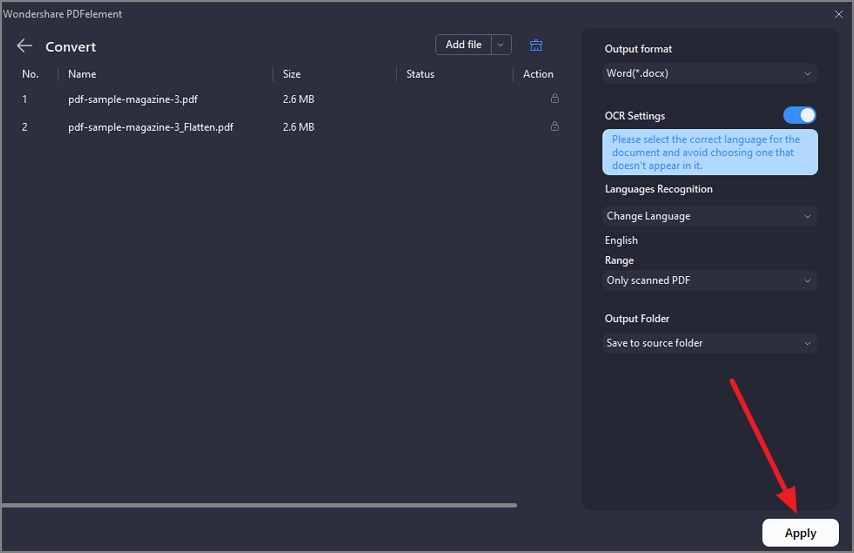
- Specify an output folder.
- Click Apply.
See? With Wondershare PDFelement, converting JPEG to PDF and PDF to JPEG is super easy.
Conclusion
PDFs and JPEGs have their strengths and weaknesses. The former is a fantastic option for printing, scanning, and creating multi-page documents. Meanwhile, JPEG is good for storing images because of its amazing color representation and small file size.
If you need a PDF to JPEG converter or JPEG to PDF converter, you should try Wondershare PDFelement. It is very easy to use, offers batch conversion, and includes other tools you will find useful. That said, Wondershare PDFelement is a very cost-effective tool.
FAQs about PDF vs JPEG
1. Is PDF better than JPEG for printing?
Yes, PDF is better for printing since it preserves resolution and layout, unlike JPEG which can lose quality during compression.
2. Is JPEG the same as PDF?
No, JPEG is an image format while PDF is a document format that supports text, graphics, and multiple pages.
3. Can I convert JPEG to PDF for free?
Yes, you can use Wondershare PDFelement to convert JPEG to PDF easily and for free.
 Home
Home
 G2 Rating: 4.5/5 |
G2 Rating: 4.5/5 |  100% Secure
100% Secure



